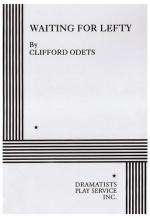|
This section contains 753 words (approx. 2 pages at 400 words per page) |

|
Since its opening, Waiting for Lefty has been considered a prime example of the dramatic genre known as agitprop (and also known as revolutionary theatre and proletarian drama, among other labels). The play is often considered the definitive example of this genre. How one feels about that type-widely popular in its time but unfashionable in recent years—seems to have a great deal to do with one's critical reaction.
Waiting for Lefty's original production in 1935 was a critical success and a popular hit. Reviewing it for the New York Times, Brooks Atkinson praised it as not only "one of the best working-class dramas that have been written" but as "one of the most dynamic dramas of the year in any department of our theatre." He stressed its realism and intensity: "the characters are right off the city pavements; the emotions are tender and raw, and...
|
This section contains 753 words (approx. 2 pages at 400 words per page) |

|




